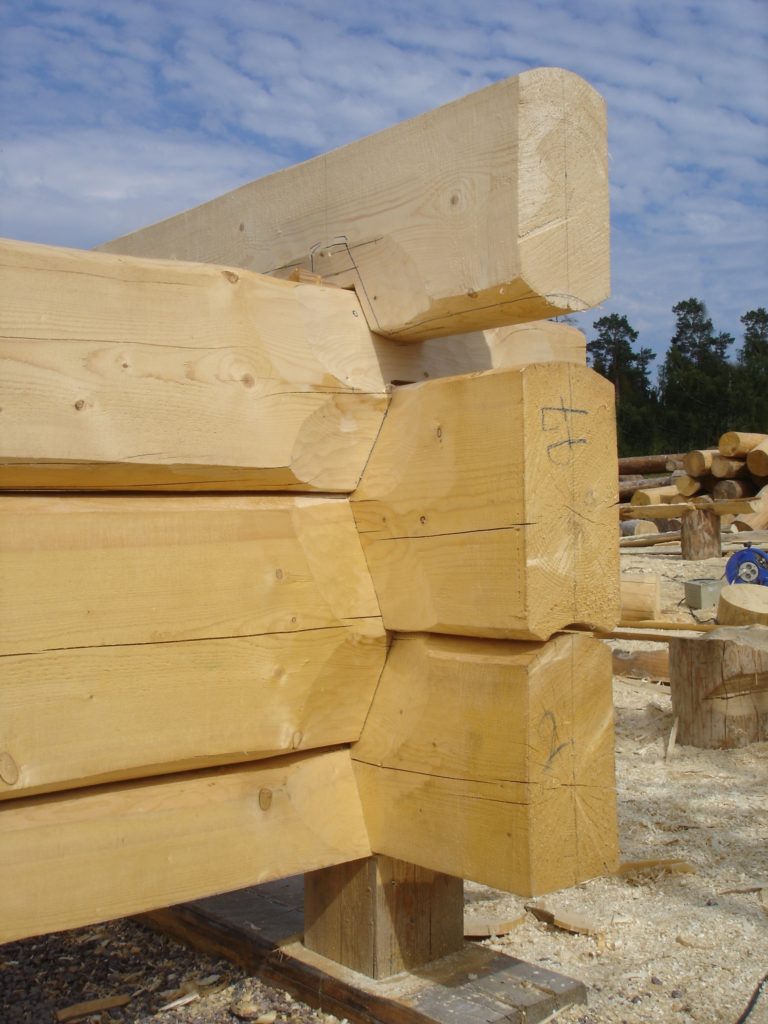Log house construction methods
Log building is one of the oldest methods of construction of residential and utility buildings. A common conventional process usually includes: installation of the foundation, erection of the lower rim, stacking of logs, and erection of the rafter system. However, the hewing method, or the style of joining the elements of a house together, may be different. In modern log building, the following corner styles are generally applied: Russian, Canadian, Norwegian, and dovetail.
Tight-pinned butt-and-pass
This is the traditional Russian method which is easy to determine visually as the log ends (butts) protrude at the corners. The protrusions usually do not exceed 30 cm from the joint. Under this method, a notch is cut out in a row of logs to connect the two logs together. A semi-oval notch is about 150 to 200 mm wide and as deep as half the diameter of the row of logs or less. The butt-and-pass technique comprises three styles:
- when the notch is cut out in the lower part of the row of logs (Russian ‘v oblo’);
- when the notch is cut out in the upper part of the row of logs (Russian ‘v okhlop’);
- when the notch is in the upper and lower parts of the row of logs (Russian ‘v okhryap’).
The first style is more common in practice as it better protects the wood from precipitation and moisture.
Dovetail
A house built using this corner style is not difficult to identify visually. There are no protruding log butts in the corners, the logs are joined by a typical corner notch which gave the name of this style – dovetail. All logs are joined butt-to-butt, and the entire length of a log is used. This log building style requires necessary knowledge and skills to ensure the right corner joints.
Canadian method
Externally, this method Russian tight-pinned butt and pass method, but there are a few differences. In the Canadian method, the grooves are not semi-oval but trapezoidal –this provides tighter fit and better joining. A sealant in the form of a tape is laid in a special channel between the logs and is invisible from the outside. Canadian trapezoidal grooving is very complex in terms of scribing and hewing and requires high professionalism of the master.
Norwegian method, or D-shaped profile
Instead of round logs, this method employs pieces that are round on the outside and flat inside. These are called D-shaped logs. Norwegian joining style is known as the interlocking saddle notch, where a notch is cut into the top of one log and the bottom of another. The interlocking logs give tighter joining. It is important to note that the craftsmen using the Norwegian method use adz to hew a log instead of an ax. The cons of this method is that the logs are deprived of the top and most durable layer, so additional wood protection is required, and the side surfaces often crack.
Each method has its pros and cons. If you want to have a beautiful and durable house, choose professionals for this.







